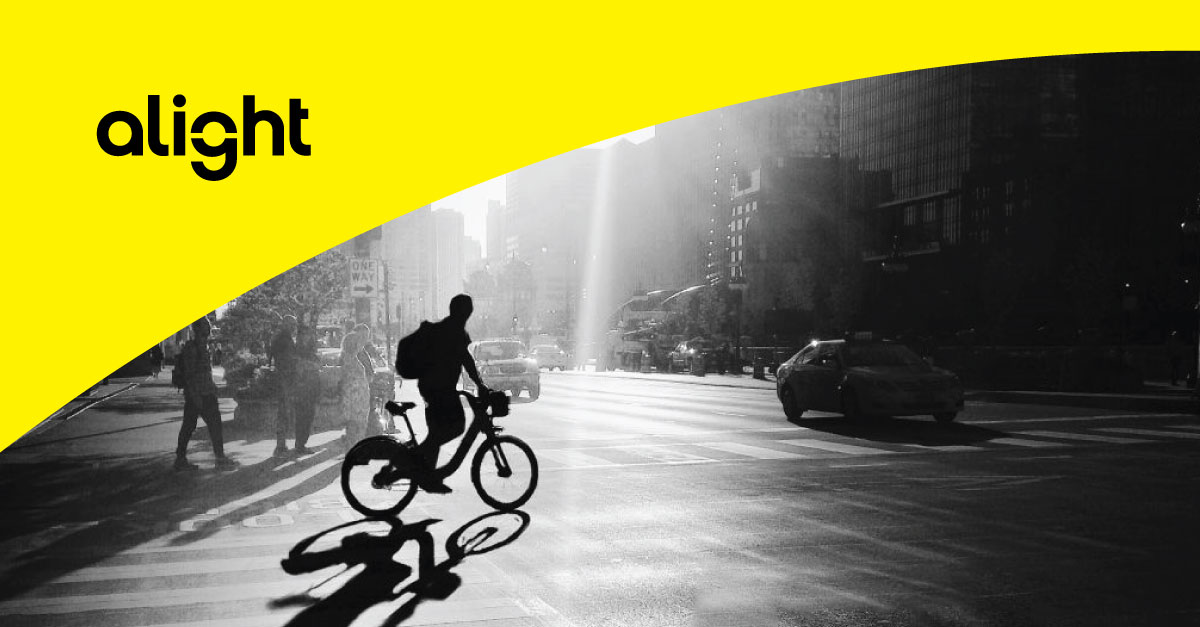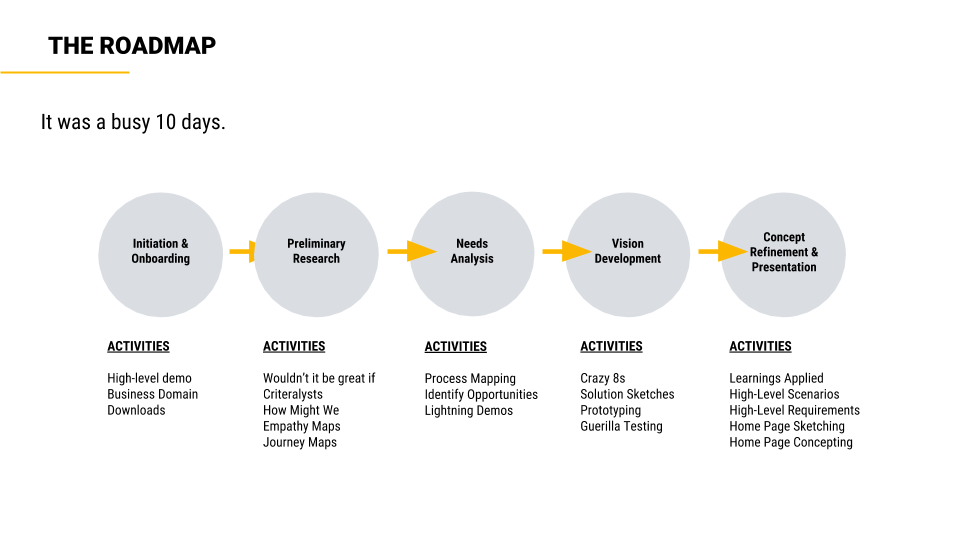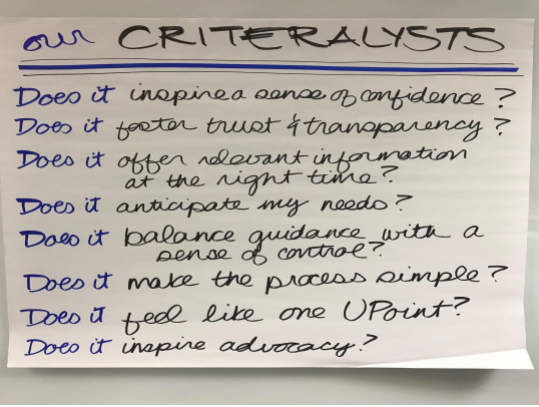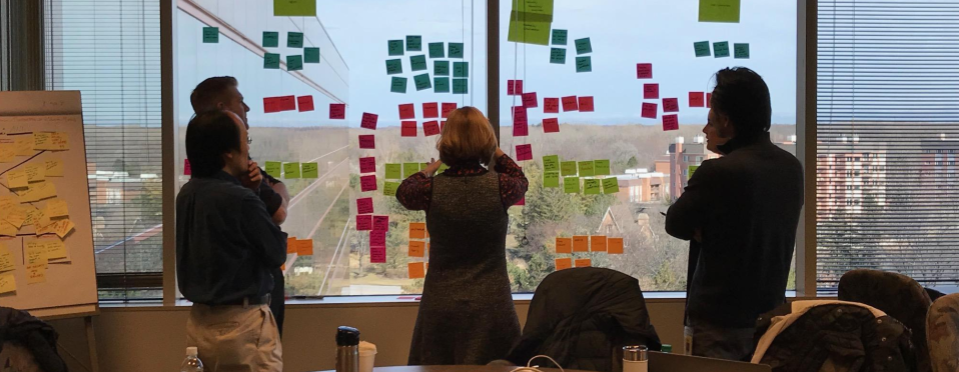Alight: UPoint 10 Day Design Sprint

About
We were approached by Alight, and Aon company, to create a vision for a consumer-grade UPoint experience – one that is achievable in the short-term and sets the foundation for long-term innovation. They asked that we teach them to use human-centered design to explore how to arm UPoint visitors with the information they need to accomplish their goals at the website landing page. The end result was to be a series of low- to mid-fidelity home page concepts and ideas that focus on how content, and the flow of content, should be thought of in the framework of that content being prioritized, personalized, and shown in various channels. The core of these concepts was how we might improve the experience, make it more human, and introduce personalization and prioritization at the home page level.
Days 1-3

We began by becoming familiar with the current UPoint experience. Working with several people on the Upoint team, we were given a high level demo of what the software was and what it could potentially do. We then met with the entire UPoint design team, from the product managers to the developers, and began to define what the needs of the product were. We conducted several brainstormig activites, finally narrowing down our requirements into a Criterialyst.

We then moved on to empathy mapping, creating several personas and identifying the motivations behind them. The personas ranged from a young adult just beginning his first full-time job, to a retiree planning for their changing benefits. Once we had listed out each personas' actions, feelings, influences and wants, we moved on to creating journey maps of the ideal UPoint experience for each persona. With a better understanding of the users, we mapped their goals, activities, emotions and touchpoints from the moment they were aware of a benefit need through task completion and beyond. We highlighted several touchpoints in the experience that could benefit from being personalized, according to the ideals set forth in the Criterialyst.


Days 4-10
We then moved to the internal part of the design sprint. To identify opportunity spaces, we outlined touchpoints users might interact with to help with their benefits decisions and mapped the steps to accomplish a task likely to start at the homepage. We then began to create sketches based on the Criterialysts, the "How Might We" lists and the Journey Maps. We chose to focus primarily on the early-in-career persona, and began creating designs. Once each member of the team had created several rough designs, we went through each and highlighted the aspects of the designs that we felt met the needs, were interesting, or worked well. We took our favorite ideas and blew them out into multiple states and steps of a high-level process. We voted on overall ideas and individual features to bring forward.

Once the storyboards were complete, we opened our laptops and began working in the digital space for the first time in this project. We began to create a series of interactive wireframed prototypes using Sketch and InVision. Each prototype carried the user through a specific flow in the website process. Throughout the process, we prioritized keeping Alight informed of our progress, having daily update meetings in which we let them know what stage of design we were on.
We then took mobile versions of the prototypes out into the world, and did some guerrilla user testing. We wanted to validate some of our designs and see if they would meet the needs of the early-in-career user, while still being translatable to the seasoned worker. We tested 8 people to see how they responded to our ideas. Feedback was very positive, and helped inform the next stage of the deisgn. We translated our testing insights and presentation feedback into homepage concepts to be presented on Day 10.
We created 5 different concepts, each with a different mode of operation. Each had a different layout, and was built to highlight different aspects of the potential use cases. These 5 concepts were presented to the team at Alight, and were very well received. Some high level results were:
- We created 5 human-centric dashboard experiences in three days
- We created a roadmap for future iterations of the Upoint product
- We created componentized content hierarchy to establish a default state and personalization rules
- The client was trained in best practices in human centered design. One workshop member said “It feels like we just opened all the windows and let in a bunch of fresh air.”
- Design facilitation helped make us trusted partners, and helped us land 3-4 additional projects for Alight
- We gave informed recommendations by taking insights from our testing to guide our thinking and making assumptions based on analytics provided by Alight.